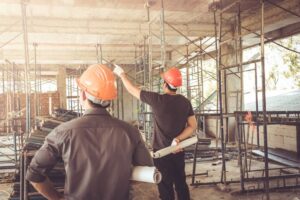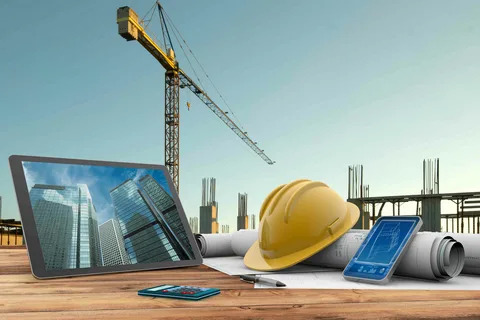What Are the Main Types of Building Construction?
In building construction, building type is the material and techniques applied to build a structure. The International Building Code (IBC) differentiates five different types of building construction that have varying requirements of fire resistance and construction materials. The Type I concrete and Type V wood-frame buildings are only some of the types that assist in determining safety requirements and design boundaries. Knowing these construction definitions will make certain that your project will not be rejected by city laws but it will be durable as well. Between a commercial building, a residential building and a mixed use property, MAM Contracting of NYC will offer the superior advice on what kind of construction should be selected to fit your site and design vision.Why Understanding Construction Types Matters
Every type of construction comes with its benefits, constraints and expenses. In the instance, Type I high-rise construction has high resistance to fire but uses of more expensive materials such as steel and reinforced concrete. In the meantime, Type V wood-frame construction is economical on smaller residential construction. Understanding what type of building you have influences the insurance rate, efficiency of the building, and future maintenance. We establish awareness among clients in MAM Contracting of NYC about the effects of construction of building standards on timelines, budgets, and safety. You can mitigate the risks on your projects by fixing the right materials and structure early enough, thereby ensuring that the buildings are in compliance with the NYC building codes and do not interfere with your architectural vision.Materials Commonly Used in Different Construction Types
The selection of building materials is crucial to structural integrity and resistance to fire. Wood, steel, concrete, and masonry are the most popular materials used in construction of buildings. Each of the types has its advantages: wood is versatile and inexpensive, concrete is durable, steel is sturdy, and masonry gives it fire resistance. Such building materials are chosen depending on the design, the site, and purpose of your project. To illustrate, masonry forms of construction are common in the urban areas due to their strength and beauty. MAM Contracting of NYC assists clients in making the best choices of material combinations to guarantee both compliance, durability and performance of various construction types.
The 5 Types of Building Construction (IBC Classification)
The International Building Code (IBC) classifies all buildings into five categories of building construction depending on the type of materials and fire-resistance. These classes start with the Type I which is the most resistant to fire to Type V which is the least. These differences are important in that they enable developers, architects and property owners to make reasonable design and budgeting decisions. At MAM Contracting of NYC, our professionals handle every type of construction, such as concrete buildings that are durable, and the wood-built buildings that are tentile and efficient to meet the safety and efficiency regulations and the code of conduct requirements. So, what makes each of these construction types and where do you most commonly come across their application in the modern day residential and commercial building construction?Type I Construction – Fire-Resistive / High-Rise Buildings
The construction type of Type I is the most durable and fire resistant of all the types of building constructions. It incorporates non-combustible materials such as reinforced concrete and steel, which is able to resist fire up to three hours. This suits well in high-rise towers, hospitals and city buildings. It is the priciest as well because of its strength and safety standards. The MAM Contracting of NYC is the company that handles complicated commercial construction projects that require such protection. Type I buildings are the most stable, durable and up to the standards of the strict NYC building codes, which makes them safe on the ground level.Type II Construction – Non-Combustible with 1-Hour Fire Rating
Non-combustible materials (concrete, steel or masonry) are also used in Type II construction but with lower fire resistance (usually an hour long). These are used in warehouses, schools and office areas where the moderate fire protection is not a concern. The use of lighter materials in the construction makes the structure cheaper than Type I though it meets the code requirements of commercial construction. At MAM Contracting of NYC, the Type II building is the one we usually suggest when dealing with middle-sized buildings that are safe, cost-effective, and operational. Regardless of the type of construction, be it a concrete building or a steel-frame structure, the building type is a long-term investment with less difficulty in maintaining the structure.Type III Construction – Non-Combustible Exterior Walls
Type III is an exterior of non-combustible masonry or concrete block with interior framing composed of wood or other lightweight materials. This type of construction is more fire resistant than all wood but is cheaper than Type I or II buildings. Examples of common ones are urban apartments, mixed-use developments, and schools. The masonry type of construction offers concrete resistant exterior and the interior is made of wood allowing flexibility and creating designs. Type III construction is common in NYC city buildings where MAM Contracting utilizes the construction with heavy balance in safety, cost, and design.Type IV Construction – Heavy Timber / Mill Construction
Type IV construction or heavy timber construction uses very large wooden beams and columns, which have surprising fire resistance due to size and density. It is a popular construction type used in warehouses, loft conversions, and commercial building construction projects such as boutiques because it is such a strong and attractive type of frame construction. This type of construction is repeatedly employed by MAM Contracting of NYC during architectural renovations which emphasize the display of exposed wood and at the same time incorporate current safety measures. The Type IV buildings are a combination of old-fashioned craft and sustainability- excellent in projects that are targeting a warm, natural look combined with a stable structure.Type V Construction – Wood-Frame Buildings
The most widespread construction type when it comes to the five types of building construction is the Type V construction, which is the most economical. It is constructed using wood framing mostly in house construction types and low rise apartments. It is also very popular due to its flexibility and low cost even though it has the least resistance to fire. MAM contracting of NYC designs and oversees the construction of building of Type V keeping in view the fire precaution and local building code. Type V wood-frame construction, used in residential or light commercial construction, is an alternative that provides property owners with the convenience, comfort and cost-efficientness without sacrificing the quality of construction structure.Quick Comparison Table: Construction Types 1–5
Understanding the five types of building construction at a glance helps property owners make informed decisions. Here’s a simple comparison of the building construction types 1–5:| Type | Main Materials | Fire Resistance | Common Uses |
|---|---|---|---|
| Type I | Concrete, Steel | 2–3 hours | High-rises, hospitals |
| Type II | Steel, Concrete | 1 hour | Warehouses, offices |
| Type III | Masonry, Wood | Moderate | Schools, apartments |
| Type IV | Heavy Timber | Moderate | Mills, lofts |
| Type V | Wood Frame | Low | Homes, small buildings |

